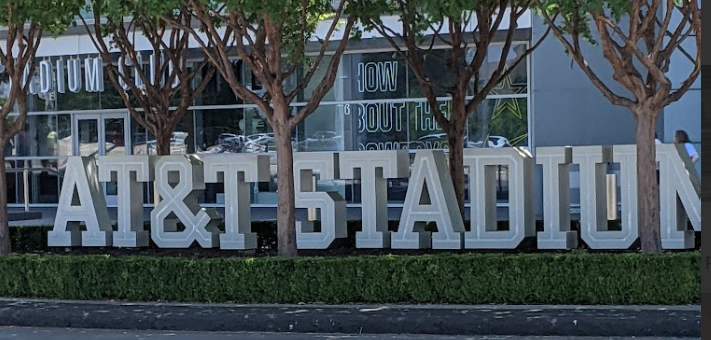In American football, the grandeur of NFL stadiums isn't just about the sport but also a showcase of architectural excellence. These marvels are homes to top-tier football teams and monuments of innovation, pushing the boundaries of design, technology, and sustainability. This article takes you on a journey through the advancements and innovations in the realm of NFL stadium design.
Innovations in Stadium Design
Sustainable Designs
In recent years, sustainability has become a cornerstone of stadium design, with architects striving to reduce the environmental impact of these massive structures.
Energy Efficiency
Mercedes-Benz Stadium, home to the Atlanta Falcons, boasts a design embodying energy efficiency. The stadium features a unique, eight-petal retractable roof inspired by a falcon’s wing shape. Its innovative design allows for natural lighting, reducing the need for artificial lighting during day games. Furthermore, the stadium is equipped with over 4,000 solar panels, generating renewable energy to further reduce its carbon footprint.
Water Conservation
In particular, Levi's Stadium has made significant strides in this area. This ecological achievement extends well beyond the San Francisco 49ers' gamelines and into the domain of sustainable architecture.
The stadium's green roof, which includes a rooftop farm, spans 27,000 square feet, helping regulate temperature and reducing stormwater runoff. Paired with a state-of-the-art stormwater management system, the stadium recycles rainwater for irrigation purposes, effectively minimizing water waste.
Innovative Materials
The use of recycled and locally sourced materials has also been a significant trend. Minnesota Vikings' U.S. Bank Stadium stands testament to this, featuring more than 14,000 tons of Minnesota-sourced limestone in its construction.
Technological Integration
Modern NFL stadiums are a fusion of cutting-edge technology and design, enhancing the overall fan experience.
Smart Stadiums
The advent of smart stadiums has dramatically transformed the viewer experience. SoFi Stadium, home to the Los Angeles Rams and Chargers, epitomizes this stadium type. With a double-sided, 70,000 square foot 4K video board and a stadium-wide Wi-Fi 6 network, it offers an unparalleled digital experience to the spectators.
Virtual and Augmented Reality
In addition, stadiums like Raymond James, home to the Tampa Bay Buccaneers, have incorporated virtual and augmented reality into their designs. Through these technologies, fans can enjoy immersive experiences such as virtual stadium tours or interactive replays of key game moments.
Mobile App Integration
Also, the integration of phone apps has brought convenience to fans' fingertips. For example, AT&T Stadium, home to the Dallas Cowboys, has an app that allows fans to order food and drinks from their seats, check restroom lines, and even find the nearest exit.

Revamping Heritage
While embracing innovation, preserving heritage and tradition is equally important in stadium design.
Historic Elements
Take, for instance, Lambeau Field, home of the Green Bay Packers. Although it has undergone several renovations since its opening in 1957, the stadium maintains its iconic "bowl" shape, preserving the aura of its historical past. It is the second-oldest NFL stadium behind only Soldier Field.
Fan Experience
Moreover, some stadiums have capitalized on local culture to enhance the fan experience. The Kansas City Chiefs' Arrowhead Stadium boasts of the Chiefs Hall of Fame, paying tribute to the team's history and legendary players.
Conclusion
From energy-efficient structures to smart technology integration and preserving historical elements, NFL stadium designs have continually evolved, reflecting the changing needs of the times. Much like the sport they host, these architectural marvels continue to enthrall, engage, and surprise us with their innovations.
The future of football stadium design is ripe with possibilities, promising even more exciting advancements that not only elevate the sport but also transform the fan experience.
Credits for the Image
The banner photo is courtesy of PixaBay.com, titled "Indianapolis, Indiana, City image." from creator 12019. Lucas Oil Stadium.


